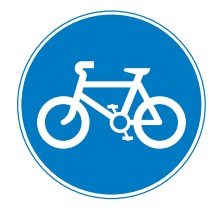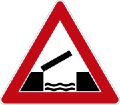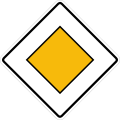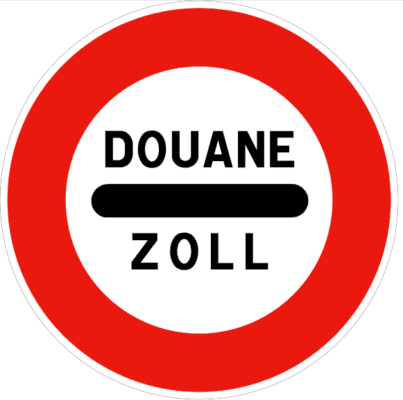Sign in
Sign in to your account using Membership ID or email and password.
Don't have an account? Sign up


Despite the differences in language and driving styles, making that foreign roadtrip is few simple rules and tips.
Perhaps the best way to really explore a foreign country is by driving. You can plan your own route, go according to your own schedule and make a stop wherever you feel like it to enjoy the scenery. Basically, you’ll get a lot out of your holiday from driving.
Before you set off on a big driving adventure be sure that the following documents are always with you:
As with driving on local roads, safety must always be a prime consideration. In just about every country in the world, seatbelts are a must for drivers and all their passengers. Even if the laws in the countries you’re driving in take a more relaxed view of seat belts, buckling up is for your own good.
When you’re driving abroad on vacation, experiencing the local fare is all part of the fun. Do remember however, that most developed countries such as the United States, Australia, New Zealand and just about all of Europe have different legal maximum alcohol limits that you need to be aware of.
While these countries have different blood-alcohol limits, the safest and most sensible option is for the driver not to drink at all. If you must drink, designate someone in your group to do the driving that day. Some bars and restaurants in countries such as the United States even support this option by serving free non-alcoholic beverages to the designated driver. For you, your family and other road users’ safety, do not drive after your drink.
Most countries in Europe adopt a left hand drive system, ie, you’ll find the steering wheel on the other side of the car. This can initially seem confusing or intimidating, but these few tips should help any driver adapt quickly:
For those not driving, the simple act of crossing a street can be very dangerous because oftentimes we are used to looking to the right first before crossing as that’s where the direction of traffic usually comes from in a right-hand drive system like in Singapore.
Just to be sure, always look left, right then left again before you cross or find a designated pedestrian crossing or a traffic light.
This may come as a surprise to some, but the driver’s physical state plays a big role in driving safely. If you’re planning on a fly-drive vacation somewhere far away, chances are you’ve just come off a long flight getting there and it’s only natural that you’re tired.
If you’ve just arrive in a different time zone, jet lag will most likely hit at the oddest times of the day because your internal body clock is still accustomed to the local time.
Here are some tips that should help you prepare for a long drive ahead.
One thing you have to take note of while driving in a foreign land, though, is to understand the road signs, which may differ from those found in Singapore. We have gathered examples of international road signs that you might encounter while driving overseas. These signs are graphic rather than textual in nature. Their meaning tends to be easy to understand, although some are less intuitive than others.
Some of the most important basics to remember:








In general, the color red on an international road sign signals negative information, such as a warning or prohibition, whereas blue is positive, indicating a required action or some feature (such as a bicycle lane, rest stop or parking garage) that you can take advantage of. Simply put, blue says DO and red says DON’T.
Below are some examples you’ll come across in Europe that are probably quite hard to understand. For those of you who wish to find out more go to https://www.autoeurope.com/roadsigns/










Some signs are, thankfully, internationally recognized. Here are two of the most important ones.




Travelling with young children can be difficult, even over short distances. Here’s some creative tips to help make your trip more enjoyable for your little ones.
Aggie Krasnolucka
is Programmes Director at the FIA Foundation where she looks after its portfolio of road safety interventions as well as leads the Motorcycle Initiative – a global hub of interventions working towards improving motorcycle safety across areas of helmet safety, infrastructure, technology, and legislation.
Previously, she worked across different areas of the international development context including community outreach and engagement, road safety, access to health, private public partnerships as well as fundraising and communications. Aggie holds a master’s degree in social anthropology as well as linguistics and literature.
Professor Wong
is currently a Full Professor at the Department of Mechanical & Manufacturing Engineering, University Putra Malaysia. He has been serving the department and the University since 1997. During his service, Professor Wong was seconded to Malaysian Institute of Road Safety Research (MIROS), a Statutory Body in Malaysia (with MIROS Act 2012) and a national research institute in Malaysia in December 2007 as the Director of Vehicle Safety and Biomechanics Research Centre. He was then appointed as the Director-General of MIROS in August 2011. His 10-year secondment to MIROS ended in September 2017 and was appointed to be the MIROS Board Director. In February 2022, Professor Wong is appointed as the Chairman of MIROS Board of Directors. Professor Wong is also appointed as an Adjunct Professor of Qatar University. He served as the Special Advisor on Road Safety to the Minister of Transport and Communications Myanmar till 2021. He was appointed to serve in the Steering Committee of the United Nations Road Safety Fund from 2022 to 2024. Recently Professor Wong was appointed as the Fellow of the Academy of Science Malaysia.
Professor Wong has driven the drafting, deliberation and enactment of MIROS Act 2012 by the Parliament of Malaysia. He is also directly and indirectly involved in establishing numerous national and international initiatives and interventions in Road Safety, amongst them are rear seatbelt law, national implementation framework of UN WP29 Regulations, enforcing various UN Regulations on Road Vehicles, airbag fitment, ASEAN New Car Assessment Programme (NCAP), International Road Assessment Programme (iRAP) for Malaysia, Guideline for Road Safety Audit, Code of Practices for Transport Sector under OSHA Malaysia, ISO39001 road traffic safety management systems and the competence requirements for auditing and certification in ISO17021-7, Pilot implementation of ISO39001 in Malaysia, use of electric cars, motorcycles and bicycles, in-depth crash and accident database, Automated Enforcement System, Mandatory of Electronic Stability Control System, Revision of Drive Under Influence, Malaysian Accident Emergency Call Systems Initiative, Endorsement of 2015 ASEAN Declaration on Road Safety Strategy by ASEAN Transport Ministers, road safety recommendations to the Government of Myanmar with in-Country Expert Mission to Myanmar, and many others.
Mr. Michihiro Toki
is a seasoned mobility and road safety expert with over 25 years at the Japan Automobile Federation (JAF). He currently serves as Manager of the Project Development Division in JAF’s Traffic Environment Department, leading national road safety campaigns and sustainable mobility initiatives.
Mr. Toki began his career in 1998 as a roadside assistance patrol officer, gaining hands-on experience with the diverse challenges faced by drivers in Japan. He transitioned to membership promotion in 2006, working with automotive dealers to expand JAF’s member base.
In 2018, he assumed a leadership role at the branch level, overseeing road safety, motorsports, and public relations. As a JAF Certified Safety Advisor, he delivered safety lectures, managed motorsport activities, and led public outreach. Promoted in 2021 to Section Manager, he expanded his role to include Safety Advisor training, PR strategy, and membership benefit development.
Appointed to his current position in 2024, Mr. Toki now directs the training of Safety Advisors nationwide and develops interactive programs for diverse audiences, including international drivers. He collaborates with government and industry partners to tackle traffic safety issues.
Beyond JAF, Mr. Toki serves on national bodies including the Sub Study Group for Advanced Safety Vehicles (MLIT), the Cabinet Office’s Traffic Safety Forum, and as Vice-Chairman of the Training Commission at the Japan Automobile Education Foundation.
Mr. Toki is recognised for his dedication to public safety, his strategic leadership in mobility initiatives, and his deep commitment to enhancing the driving culture in Japan.
Mr. Tay Chay Sim
Mr Tay Chay Sim Senior Technical Consultant and Trainer AAS Academy Mr Tay Chay Sim is the Senior Technical Consultant and Trainer for AAS Academy, a wholly owned subsidiary of Automobile Association of Singapore where he conducts and leads the training team in delivering safe driver courses to all classes of drivers, including private and commercial drivers.
He has been professionally awarded international accreditations from International Road Transport Union (IRU) Academy, The Royal Society for Prevention of Accidents (RoSPA), DriveTech UK and Institute of Adult Learning, Singapore. He is a certified MORRTM (Managing Occupational Road Risk) auditor by RoSPA.
Chay Sim is an advocate for continuous learning on safe driving. With over 20 years of experience in the automobile industry, Chay Sim is also known for his strong technical expertise and contributes his knowledge to print and media publications. He is effectively bilingual and has made appearances on TV shows and guest panel speaker to events and seminars. Prior to joining AA Singapore, Chay Sim worked with the SMRT Corporation and PSA Singapore on mechanical and electrical services as well as vehicle maintenance and repairs services.